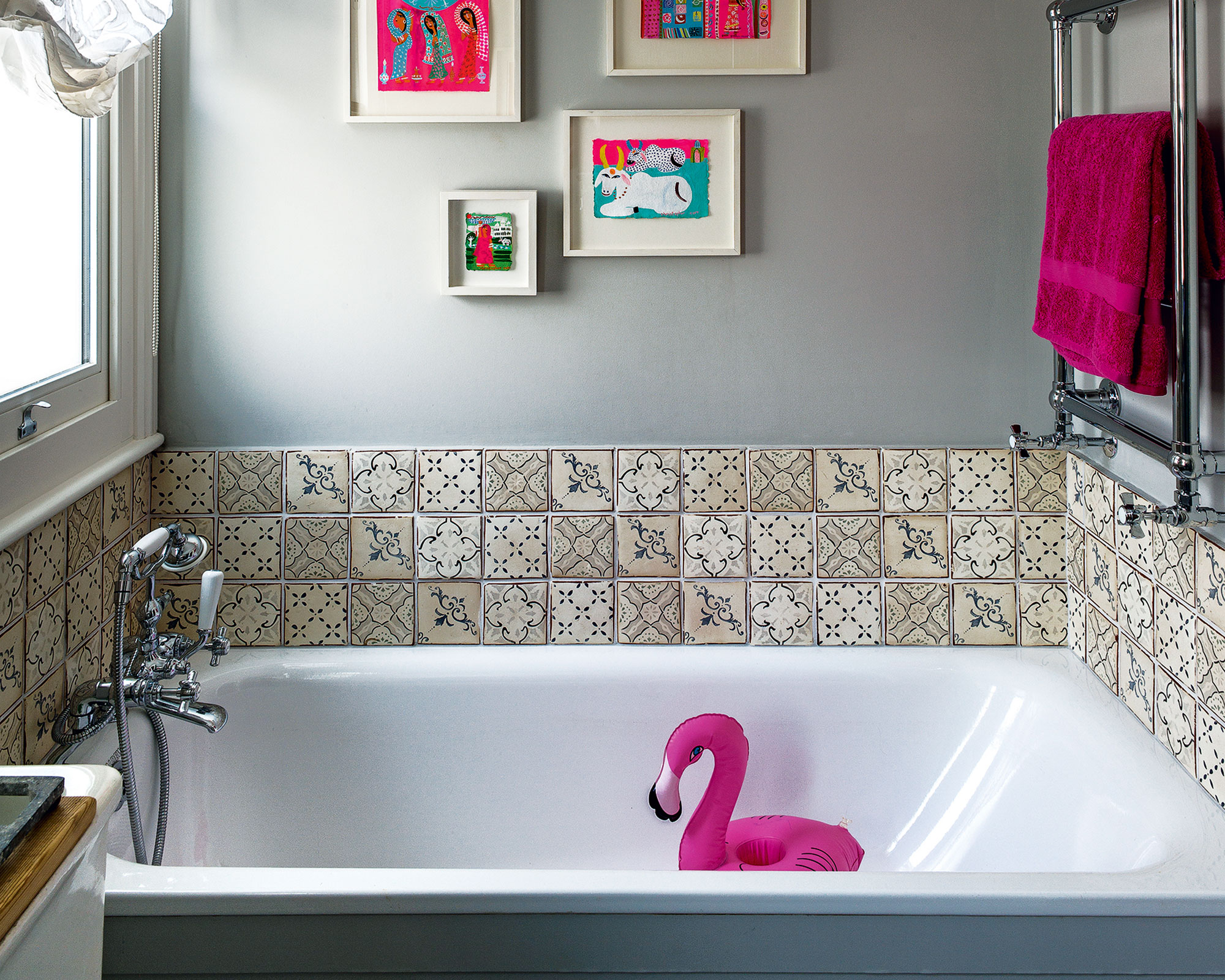How to clean bath toys – so they remain hygienic
Wondering how to clean bath toys? Follow the advice of the experts to keep them pristine

Knowing how to clean bath toys is important. They may spend their lives in soapy water, but bath toys require a dedicated cleaning routine. In fact, to keep them hygienic, experts recommend a proper clean at least once a week, if not more.
As well as making time to do the job, it’s worth making space and your laundry room ideas can provide you with a place to clean them, as well as somewhere to store the products to do so.
Here, we’ve put together an expert guide on how to clean bath toys, so you can ensure good clean fun when bath time rolls around.
How to clean bath toys
You might think the question of how to clean bath toys isn’t a big issue but like washing stuffed animals it’s important in order to safeguard kids’ health. And bear in mind that while bath toys may look clean on the outside (and probably are if you’re rinsing them regularly), inside is a different story.
‘It’s damp and dark with no air circulation; the perfect breeding ground for germs and organisms,’ says Beth Rivera of Best For Mums. ‘This can aggravate allergies, respiratory problems and other health problems in children so it’s something we need to tackle.’
How to prevent mold building on bath toys
One of the reasons it’s vital to know how to clean bath toys is because mold can thrive on them.
To prevent its buildup, a quick rinse in tap water after every bath time can make all the difference. Squeeze out as much water as possible, particularly from squeezy toys, then leave them to dry. Humidity can be an issue too, so switch the bathroom fan on for 20 minutes to draw moisture out of the room. It’s also worth investing in a net bag that can be hung above the bath to keep the toys well away from water when they’re not being used.
Design expertise in your inbox – from inspiring decorating ideas and beautiful celebrity homes to practical gardening advice and shopping round-ups.
‘If you're pinched for time, cleaning the outside with a disinfectant wipe is better than nothing until you can do a more thorough clean,’ suggests Beth.
Run bath toys through the dishwasher
According to Beth, cleaning bath toys a little more thoroughly doesn’t have to be time consuming – and they’re actually one of the surprising items you can clean in the dishwasher.
‘A great hack for busy parents is to pop bath toys in the dishwasher on a quick, hot cycle – squeeze any water out of them first. You can forget about them then while the dishwasher does the dirty work,’ she says.
There are some bath toys that aren’t compatible with the dishwasher, so double check the manufacturer’s recommendations first to avoid any tears. And don’t forget that cleaning a dishwasher itself is also required whether it’s plates and saucepans or bath toys it’s making hygienic.
Boil bath toys in hot water
If you don’t have a dishwasher, you can still give bath toys a thorough clean by sterilizing them in boiling water. ‘This is really effective for killing germs and bacteria,’ says Steve Evans, owner of Memphis Maids.
The experts at Essential Living say that this works particularly well for hard plastic toys, as well as foam letters and numbers. ‘Place them in a large bowl of boiling water and let the toys soak for a few minutes, then carefully remove (using tongs and rubber gloves to protect your hands) and place on a towel to dry,’ they advise.
It’s a good idea to position them with the hole facing downwards so any excess water can drain out. If you’ve got one, consider popping your bath toys in an airing cupboard to help them dry out properly.
Avoid harsh cleaners
Some professionals advocate bleach for cleaning bath toys, but it has its drawbacks; it’s tough on your eyes and nose, it can affect colors and patterns, plus it’s harmful if ingested – not ideal when you think how often bath toys end up in children’s mouths.
Beth Rivera recommends cleaning with vinegar instead. ‘Vinegar can dissolve soap scum when allowed to soak for a long enough,’ she says. ‘Leave bath toys overnight in a sink filled with hot water and vinegar – a 2 cup to 5 liter ratio is perfect.’ Give them a scrub with a toothbrush once the accumulations are loose, rinse with fresh water, then let them dry thoroughly.
If you’ve got floating toys, pop them in a netted bag and weigh it down with something heavy so they’re fully submerged.
Choose mold-resistant bath toys
A little bit of mold inside a bath toy is not a huge problem and can easily be solved with regular cleaning. However, if you’d rather eliminate the problem altogether, mold-resistant bath toys are the answer.
How do you know if a bath toy is mold-resistant or not? It’s usually made clear in the retailer’s description, but an obvious indicator is whether the toy is in one piece. If water can get inside, then mold can grow there. Another option is to cover up the holes in your existing bath toys. A drop of hot glue acts as a plug.
Modify bath toys to make them easier to clean
Plugging up the holes may not go down too well with your little ones; they do love a squirty bath toy. If that’s the case, consider drilling the hole to make it larger instead. This won’t affect the toy’s function but will make it much easier to clean. Make sure the hole is wide enough to fit a pipe cleaner inside for scrubbing and a cotton swab for drying.
How often should I clean bath toys?
Experts recommend giving bath toys a proper clean roughly once a week, however, it’s important to rinse and dry them thoroughly after every use to keep mold at bay. It’ll make your job easier in the long run, and help them last longer, too.
How often should I replace bath toys?
Even with a regular cleaning routine, bath toys do wear, particularly ones made from foam or rubber. While there’s no official guidance on how often you should be replacing them, there are a few warning signs to look out for; if they’re discolored and smelly, or the water coming out of them looks grubby no matter how often you’ve washed them out, it’s time to get rid.
How do you get mold out of bath toys?
Squeezy toys are one of the worst culprits for harboring mold inside. And even worse, it doesn’t stay there. In fact, it regularly gets squirted into your child’s bath water. Consider using a drill to make the hole in the bottom a little bigger. This will enable you to give it a proper scrub, and it’ll help with the drying process, too.
Prevention is better than cure, so it’s important to stay on top of your cleaning routine to keep mold at bay. Squeeze all the air out of the toy before submerging it into your chosen cleaning solution. Allow the cavity to fill, then squeeze. Do this a few times until the solution runs clear and leave to dry thoroughly.

For 10 years, Tara King worked as a Content Editor in the magazine industry, before leaving to become freelance, covering interior design, wellbeing, craft and homemaking. As well as writing for Ideal Home, Style at Home, Country Homes & Interiors, Tara’s keen eye for styling combined with a passion for creating a happy – and functional – family home has led to a series of organization and cleaning features for H&G.
